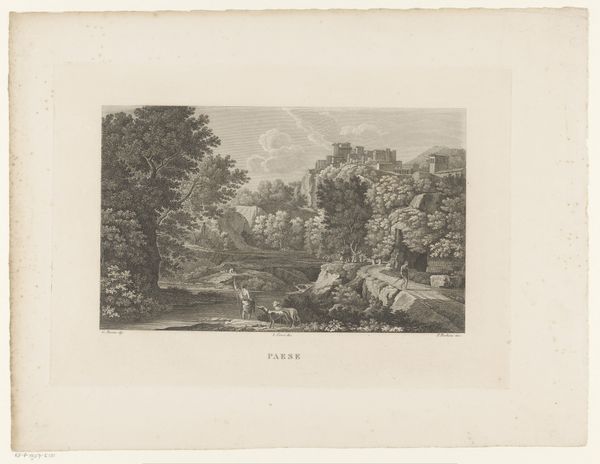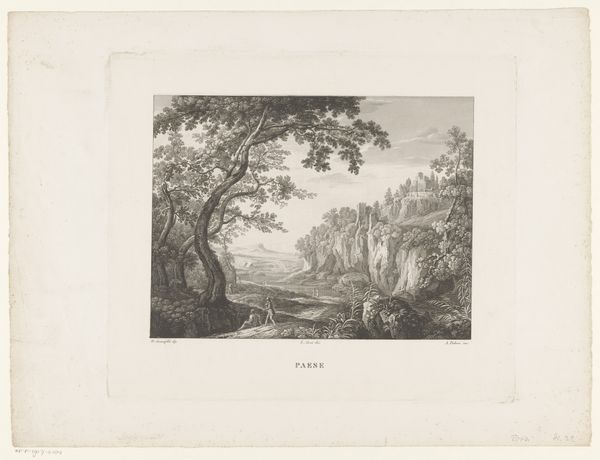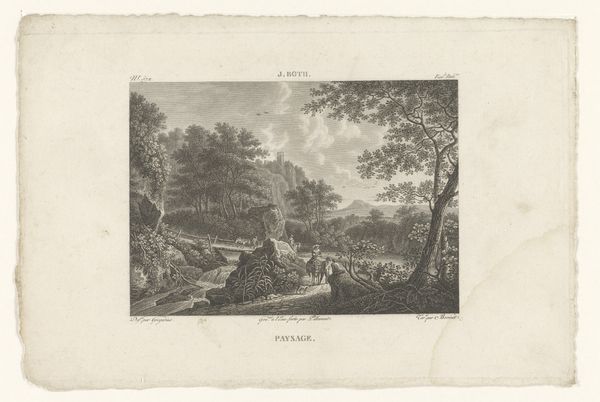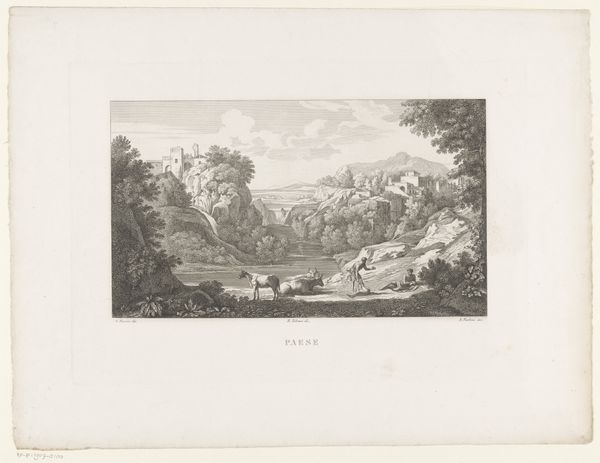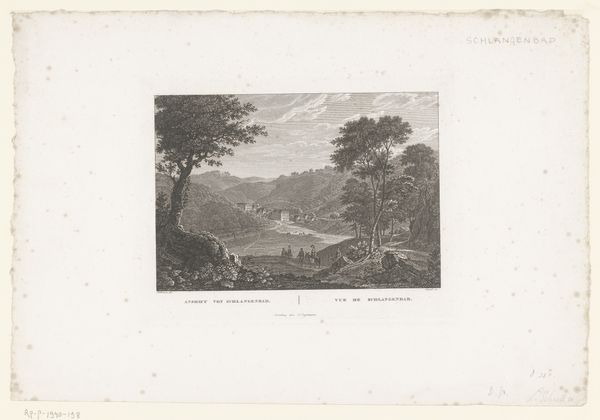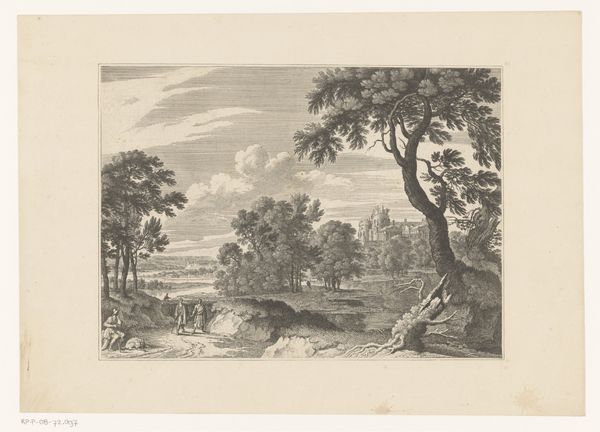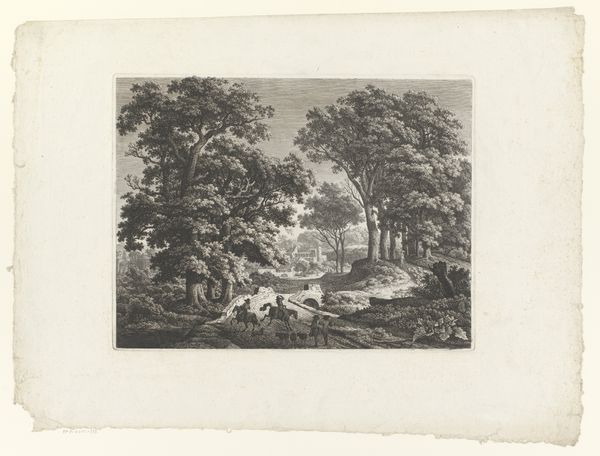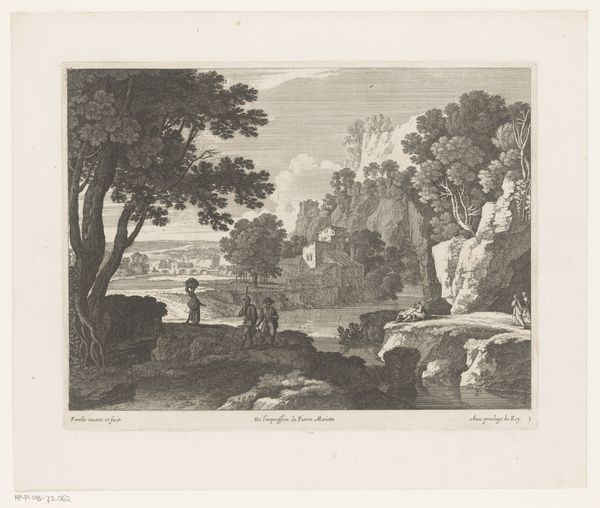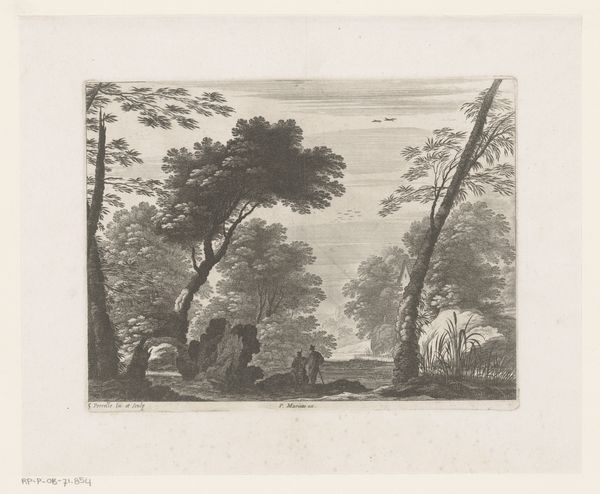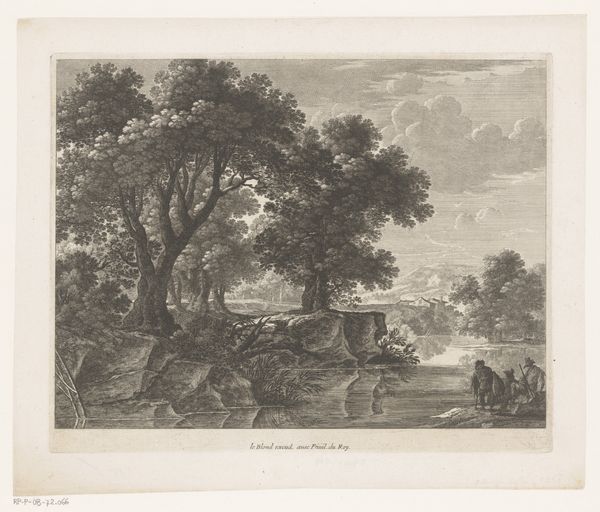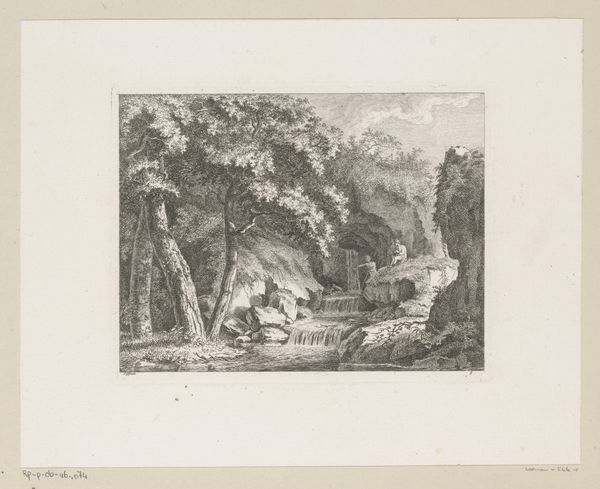
print, engraving
# print
#
old engraving style
#
landscape
#
river
#
romanticism
#
engraving
#
watercolor
Dimensions: height 244 mm, width 287 mm
Copyright: Rijks Museum: Open Domain
Achille Parboni's "Landschap met rivier met stroomversnelling" captures a landscape with a river and rapids. We don't know the specific date, but the work offers a window into the aesthetic sensibilities of its time. Engravings like this one often idealized nature, presenting a harmonious view that perhaps masked the socio-political tensions of the era. How might the absence of human figures, or the focus on untouched wilderness, reflect a longing for escape from urban life and its attendant social issues? Were images like this used to promote certain ideas about land ownership or national identity? I wonder about who these landscapes were created for, and who had access to them. Did they reinforce a sense of privilege for some, while excluding others from the narrative of the land? Looking at this piece, I'm reminded that landscapes are never just neutral views; they're imbued with cultural and historical meanings that speak to power, identity, and belonging.
Comments
No comments
Be the first to comment and join the conversation on the ultimate creative platform.
